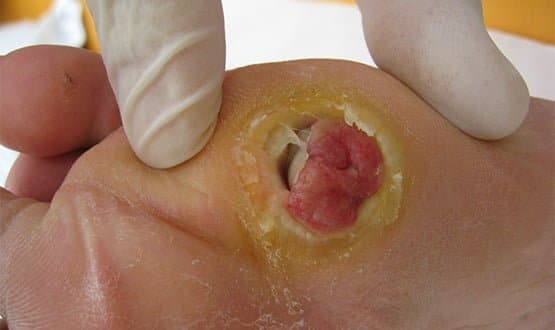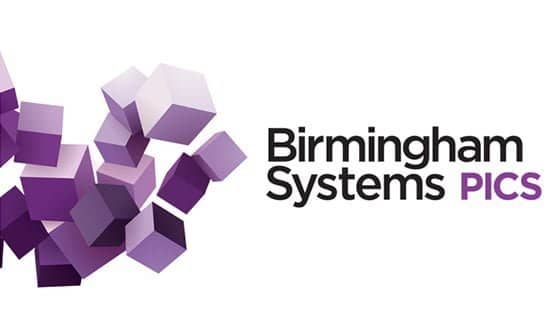Time heals all wounds; but IT can help
- 31 March 2015

“At any given time, an estimated 200,000 people are suffering from chronic wounds, such as leg ulcers and those resulting from pressure and diabetes,” says Achala Patel, managing director of Entec Health.
“The NHS puts the cost of managing those patients at around £3 billion per annum – most of which is down to the staff costs of intervention, such as applying wound care dressings and compression bandaging.”
Financial burden
Moreover, she says, the financial burden on trusts looks as if it will get worse, as more and more people in the UK live with diabetes and its complications – which can include limb damage bad enough to require amputation.
This, she says, makes it imperative to act early. “Treating wounds effectively will not only limit their impact on the diabetic patient’s life, but also save the taxpayer money,” she says. Unfortunately, she adds: “Current practice often involves quite cumbersome and subjective approaches.”
Neither accurate measurement nor imaging of wounds is routinely undertaken, treatment approaches vary from place to place, and wound management teams tend to lack information about what is happening to their patients on an ongoing basis.
Entec Health believes there is a significant opportunity to improve the effectiveness and cost-effectiveness of wound management in the UK.
It has formed a partnership with ARANZ Medical, the developer of Silhouette, an electronic wound assessment and information management system.
The system was launched onto the global market in 2007, and brought to the UK in 2011. Entec Health entered it for an EHI Award last year for healthcare IT product innovation; and saw it emerge the winner.
Digital approaches
Silhouette enables digital wound imaging, data capture, documentation and reporting. It comprises a digital wound camera, wound assessment software and an information database.
Patel says it helps clinicians achieve improved clinical management of patients with chronic and acute wounds, including ulcers and surgical wounds by replacing largely subjective, manual, paper-based processes with a more objective and automated digital approach.
“Using state-of-the-art wound imaging, 3D wound measurement and information management technology, health professionals can quickly and accurately capture digital clinical information on wound status and healing progress at the point-of-care,” she says.
“Silhouette gives nurses a front line digital tool patient-side, enabling them to take good images very quickly, upload them into a controlled patient record, and then carry out measurement of wounds thanks to the 3D model created by the smart software and algorithms.
“Cross-reference lasers emitted by the camera define wound topography and give nurses instant detail of dimensions plotted over time.
“At a glance, it means they have a quantitative, objective indicator as to the effectiveness of any treatment. In other words, they have better data at the point of care for better, faster clinical decision-making.
“Once the data has been uploaded to a central point, any authorised team member can review it from their desk without having to run around multiple sites. It means specialists can provide a remote advisory service back to their own nursing team.
“That, in turn, means more consistent practice, better treatment plans and ultimately more successful outcomes. That’s what has motivated our early adopters and is now getting others beating a path to our door.”
Ripple effect
Early adopter sites report positive experiences with Silhouette. For instance, the company cited a case study from King’s College Hospital NHS Foundation Trust in its entry.
The case study, dating from March 2013, and published on the NHS High Impact Innovations Showcase, as well as the company’s own website, says the trust’s diabetic foot ulcer clinic initially used Silhouette for a clinical research study, using anonymised patient data, but quickly saw its potential for use by the multi-disciplinary team.
The trust’s podiatry manager, Maureen Bates, is quoted as saying: “The digital wound assessment and information management system is an enabling technology and makes the team’s job significantly easier.
“[It] generates quality assessment data, including digital wound images and measurements plotted over time, plus it allows the capture of electronic notes.
“This means all members of the care team can easily and quickly assess the patient dashboard and information database for an objective review of how the ulcer is healing and confirm if treatment is working.”
The trust subsequently went on to win £53,000 in the first round of the Nursing Tech Fund for a full implementation of the system in clinical practice.
Patel says it is now using the system to manage all of its diabetic foot patients in the out-patient clinic, and has implemented a digital data capture flow to move towards a paperless clinic.
Patel adds that this endorsement is having a ripple effect. “Thanks to our early adopter engagement with Professor Edmonds and his team at Kings College Hospital, other clinicians – particularly in the diabetic foot world – are becoming more aware of the solution,” she says.
Entec Health is also working with: the Wound Healing Research Unit at Cardiff University Hospital, the Royal Infirmary of Edinburgh, the Southern General Hospital in Glasgow, and Ninewells Hospital in Tayside.




